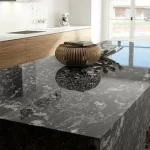As the skin gets thinner, wrinkles begin to show up. That is the natural aging process, and you can’t stop it. But before then, extended exposure to the sun can damage your skin over time, which leads to premature aging.
Premature aging due to sun exposure is known as photo-aging. It makes the skin feel leathery, coarse, and dry. It also causes deep wrinkles, discoloration, and freckling.
Table of Contents
Can You Reverse the Effects of Sun Exposure?
From gels and topical creams to chemical treatments, several interventions are available to reverse photo-aging. They smoothen the wrinkles, make uneven pigmentation less visible, and much more. You may have heard about Botox as an anti-aging technique, but we will discuss other cosmetic options for aging and sun exposure.
Microdermabrasion
This cosmetic procedure is non-invasive and uses tiny crystals enclosed in a device for exfoliation. It removes the top layer of the skin, giving it a rejuvenated appearance. Conditions that require microdermabrasion include melasma, age spots, dull complexion, and uneven texture and tone.
The procedure takes place in a dermatologist’s office and lasts between 30 and 45 minutes. The side effects are mild, and you may not experience them at all. There is also no downtime, but you must protect yourself from the sun after treatment. You may start seeing results within a short period, but optimum results require multiple sessions.
Ultherapy
Ultherapy takes care of skin tone, texture, and laxity. It lifts loose skin and tightens it without any downtime. The procedure is non-invasive and uses ultrasound energy.
The procedure heats up the top layer of the skin to create small wounds. As the spot heals, it produces collagen, giving your body an uplift. You can use ultherapy to tighten your neck, chin, and brows. You can also use it to remove fine lines and wrinkles.
Depending on what is being treated, ultherapy takes between half an hour and ninety minutes. The results can last for about six months, after which you can undergo maintenance yearly or biennially.
Chemical Peels

A certified dermatologist uses chemical peels to improve the appearance of patients. The specialist applies a blend of chemicals to the affected area. This removes the top layer, giving room for inflammation to occur and the regeneration of new skin. An additional effect is the removal of precancerous lesions, uneven pigmentation, and fine lines.
This method does not involve surgery, and it is customizable. The dermatologist will decide the strength of solution you need, whether surface, medium, or deep. However, this depends on your skin type and therapeutic and aesthetic goals. Expect some burning sensations during treatment.
Usually, deep treatment requires several visits. This also depends on the strength of the chemical peels. Stronger peels require a longer downtime and there are some side effects like swelling and redness. Milder peels have a shorter downtime but are quite expensive.
After the procedure, dead skin cells flake off, giving way to a smoother and brighter complexion. It is not advisable to expose yourself to sun rays at this time. If you’re considering this procedure, watch this video to see how it is done.
Intense Pulse Light
Intense pulse light therapy is a gentle method of improving conditions such as uneven pigmentation, wrinkle lines, and age spots that are caused by sun exposure. The therapy lasts between 30 and 45 minutes and has no downtime. However, your body will become very sensitive to the sun. Hence, sun protection should be your priority.
During therapy, multiple wavelengths of light energy are transmitted to the target spot. They heat the dead or pigmented skin, disintegrate, and eliminate it from the body. This procedure can treat a large surface area since it uses multiple light wavelengths.
Although highly effective, intense pulse light therapy should not be used for dark-skinned patients. It should only be used for white or light brown skin tones. This is because, after a series of treatments, the affected spot becomes visibly bright.
Laser Therapy
Laser therapy is suitable for different parts of the body, such as the chest, face, and neck. There are different types, and each method is effective. The procedure is not time-consuming, and the downtime depends on the laser used.
Fraxel and CO2 lasers come highly recommended when dealing with uneven pigmentation, textural changes, and wrinkles.
Fraxel Laser
Fraxel is suitable for different skin types and conditions like stretch marks, sun spots, and scars due to chickenpox, acne, melasma, crow’s feet, and lip lines. You only need 3 to 5 sessions and maintenance treatments each year. The downtime takes about a week.
CO2 Laser
This option is popular for skin resurfacing. It can treat large pores, age spots, and deep wrinkles that were triggered by exposure to the sun. The device for this procedure emits either short-pulsed or continuous light energy. The light does not affect nearby tissues, and the result is long-lasting. However, the downtime might take some weeks.
Skincare Tips for Aging and Sun Damage
The following tips will protect your skin from aging and sun damage:
Sunscreen Protection
Avoiding and/or protecting yourself from the sun is important. However, use sunscreen because sun exposure can cause skin cancer, wrinkles, and dark spots. If you will be out in the sun at any time, apply SPF 30+ 15 minutes before you go out and at an interval of 1 to 2 hours while you are outdoors.
Ultraviolet Protection
Ultraviolet protective wear can block the harmful UV rays coming from the sun. A UV protection factor of 50 fabric filters out 98 percent of UVA and UVB rays.
A Healthy Skincare Routine
For early sun damage, consider adding retinoids and vitamin C serum to your skincare routine. Use retinoid at night and the serum in the morning before applying sunscreen. Do not use a prescription retinoid unless your dermatologist prescribes it because it might irritate your skin. You can visit https://www.webmd.com/beauty/features/its-not-your-mothers-skin-or-is-it to find more useful tips.
Conclusion
Several factors affect the way the skin ages. They may be hereditary, environmental, or even your habits. The best approach to tackling skin aging caused by sun exposure is prevention. But if you are already affected, we shared some cosmetic options that you can use to reverse the situation.








